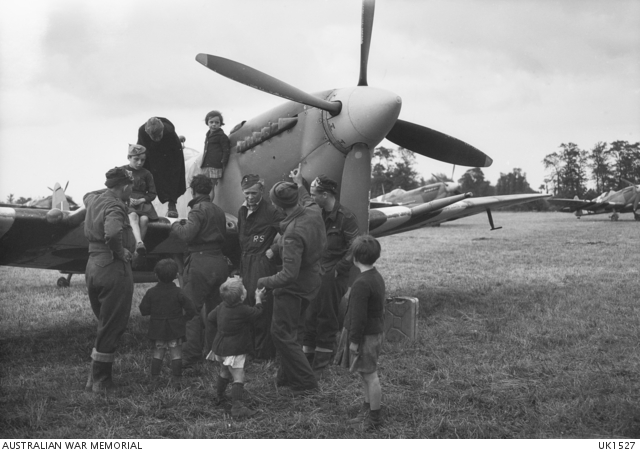At dawn on this day in 1944, more than 130,000 Allied troops landed on 5 Normandy beaches in Nazi-occupied France. Around 18,000 airborne troops had parachuted inland hours earlier. Many thousands of sailors and airmen also participated by delivering naval and air support to the troops. The invasion was called D-Day and involved the largest amphibious assault ever mounted and the largest airborne landing up to that time. Churchill described it as ‘much the greatest thing we have ever attempted’.
D-Day marked a turning point in the Second World War and hastened the defeat of Nazi Germany.
Though Australia was focused on commitments in the South-West Pacific, it is believed that some 3,300 Australians took part in D-Day. This included some 2,800 Australian airmen who served in Royal Air Force (RAF) and Royal Australian Air Force (RAAF) squadrons and about 500 Royal Australian Navy (RAN) personnel who served on British warships, landing craft and on the beachhead. A small number of Army officers were also assigned to British units.
Tragically, 13 Australians are known to have lost their lives on D-Day: 2 RAN and 11 RAAF personnel.
Many more Australian airmen and several Australian seamen died in Normandy operations prior to and after the landings. The RAAF suffered more casualties in June 1944 than in any other month of the war.
One Australian with a notable mission was Lieutenant Kenneth Hudspeth, Royal Australian Naval Volunteer Reserve (RANVR), who commanded the British mini-submarine X20, which carried a crew of 4. Hudspeth had already commanded a similar submarine in a famous raid on the German battleship Tirpitz in a Norwegian fjord in September 1943, for which he was awarded a Distinguished Service Cross (DSC). In the months before D-Day, Hudspeth commanded the X20 on a daring operation to survey and collect geological samples from the chosen landing beaches at Normandy. For these efforts he was awarded a Bar to his DSC.
On the morning of D-Day, Hudspeth’s mission was to moor the X20 as a navigational beacon for the invasion fleet off Juno beach. He arrived off Normandy on 4 June but when bad weather saw D-Day postponed, he and his crew had to remain submerged off the coast, only surfacing in the early hours of 6 June. Hudspeth and his crew helped guide the assault force using an echo sounder, radar, and a shaded light for signalling. For this, he became the first Australian naval officer to be awarded a second Bar to his DSC.
Another Australian who participated in D-Day was Flying Officer Alfred Ernest Roberts. He was one of the many RAAF airmen serving in RAF squadrons. A pilot in No. 164 Squadron, he flew Hawker Typhoon fighter-bombers on ground-attack missions. On D-Day, less than two weeks after his 26th birthday, he was attacking a German road convoy near the village of Frenouville when his aircraft was damaged by anti-aircraft fire and then shot down by German fighters, killing him. In a letter of condolence to his mother, his commanding officer wrote that Roberts had been ‘an inspiration to us and we shall feel his loss very much. Not only has his ability as a pilot been of inestimable value to the Squadron, but his cheerful and buoyant nature has endeared him to everyone with whom he has come into contact’.
Although the success of the landings initially suggested a quick end to the war, the campaign to break out of Normandy lasted well into August, due to determined German resistance. The war in Europe continued until May 1945, with contributions from various Allied nations, including Australia.
Today we remember the nearly one million Australians who served in the Second World War, and the more than 39,000 who died.
To learn more about the D-Day landings, visit the Anzac Portal as well as the Australian War Memorial website.

French children show interest in a Spitfire of No. 453 Squadron RAAF at an advanced landing ground, Normandy, France, July 1944. Courtesy Australian War Memorial